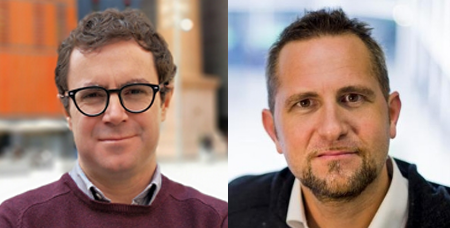Two UPF projects awarded Proof of Concept (PoC) grants from the European Research Council
The TEAXON project, of the Department of Information and Communication Technologies, and the WiseReader project, of the Department of Economics and Business, have been selected by the European Research Council to take a step forward and move from research to transfer and marketing.

Today, 24 January, the European Research Council (ERC), via a press release, has announced the 90 projects selected to receive a Proof of Concept grant, endowed with €150,000, which aims to help explore the commercial potential of ideas and results from research projects that have already received funding from this European body.
In all, 8 projects from Spain have been selected, two of which belong to UPF research groups. The first of these, TEAXON, is led by Antoni Ivorra, head of the Biomedical Electronics Research Group (BERG) of the BCN MedTech Research Unit of the UPF Department of Information and Communication Technologies (DTIC). The second, WiseReader, is led by Ruben Durante, of the Department of Economics and Business, and is the first project in the field of Social Sciences and Humanities at UPF to receive this type of grant.
TEAXON, business development of injectable wireless microsensors based on eAXON technology
The TEAXON is based on the eAXON project, in which wireless injectable microstimulators have been developed to perform neuroprosthetics through neuromuscular stimulation with the ultimate aim of recovering motor functions in patients with paralysis.
The eAXON project has been funded with an ERC Consolidator Grant, and thanks to its good results, this same institution has selected it to carry out proofs of concept by means of the Proof of Concept (PoC) grant. In 2021 it received the first PoC with the Senso-sAxon project and it has now been granted a second proof of concept to carry out the TEAXON project, which aims to promote the business development of eAXON technology for therapies based on electrostimulation but not necessarily for purposes related to motor functions.
“We hope that the TEAXON proof of concept will allow us to advance the level of technology development and analyse its commercial approach for different clinical uses”, Ivorra comments.
“We hope that the TEAXON proof of concept will allow us to advance the level of technology development and analyse its commercial approach for different clinical uses”, Ivorra comments. Unlike other stimulation technologies suitable for clinical use, eAXON technology allows the development of much finer stimulators that can be implanted minimally invasively by injection. The project already has advanced prototypes, in the form of a wire, with a diameter of less than 1 mm, and consist of a silicone tubular body with two electrodes at opposite ends and a titanium capsule in the centre that houses the electronics hermetically. This degree of miniaturization is possible because eAXON technology avoids the need for bulky components within implants to power them (e.g., batteries or coils).
This proof of concept will allow them to increase the value of the technology by exploring new uses and new functionalities in the field of therapies based on electrical stimulation.
WiseReader, empowering readers in the face of disinformation on the Internet
The WiseReader project has developed an application to help readers of online media to discern between neutral and subjective information by analysing different aspects of the source of information.
This project is the result of a previous project by professor Durante, "Independence and quality of mass Media in the InteRnet AGE (MIRAGE)”, funded by an ERC starting grant. Its goal was to analyse how the Internet has transformed the way news is produced and disseminated and what effect it has had on the media and on the quality of content.
The results achieved in this first project have led Durante to drive the development of a technological tool, WiseReader, that allows exploiting these results in order to promote an impact on society.
To increase trust in online media by informing users about the conflicts of interest behind an information source.
The main aim of this new tool is to increase trust in online media by informing users about the conflicts of interest behind an information source. Trust in the media has steadily declined throughout the world over the past few decades and the spread of disinformation is on the rise. Media mistrust is fuelled by the perception that news companies are not really independent but are serving the interests of the economic actors with whom they are connected, owners, advertisers and even creditors.
WiseReader aims to reduce this problem by offering users an online solution that allows them to instantly and effortlessly discover any conflicts of interest behind the media they consume.
This tool comes in the form of a web browser extension that carries out the following operations: it recognizes the news website visited by a user, identifies the companies and people that appear in an article, searches an extensive database of companies for relevant connections between the news medium and the different companies/individuals, and finally displays the results through an intuitive system of coloured flags.
Thus, WiseReader empowers citizens by helping them understand which news sources are trusted and which should be doubted.
More than 40% of ERC-funded projects generated results that were later cited in patents.
These grants help explore the commercial or social potential of the findings that researchers have made through their ERC projects. The aim is to enable ERC-funded ideas to move from research to innovation. Recently, a new study concluded that more than 40% of ERC-funded projects generated results that were later cited in patents.
